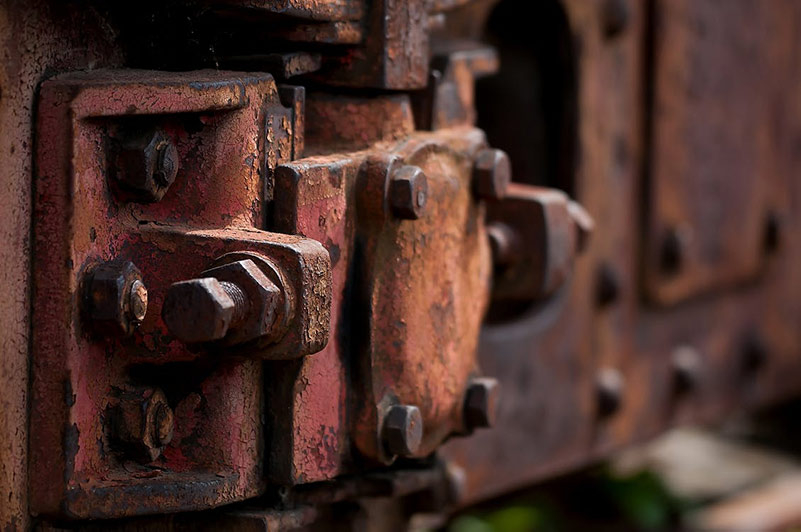
No metal is completely safe from the threat of corrosion. But it is possible to slow, manage, or stop corrosion before it causes a problem.
There are practical ways to prevent corrosion in metal parts. Engineers can incorporate corrosion control into the design process. Manufacturers can apply protective corrosion barriers. Finally, the people who use the part can take preventative steps to prolong its life.
What is Corrosion?
Corrosion occurs when a metal reacts with an oxidizing agent in its environment. This chemical reaction can cause the metal to degrade over time, tarnishing its appearance and compromising its structural integrity.
Each type of metal has different electrochemical properties. These properties determine the types of corrosion the part is vulnerable to. For example, iron tools are prone to rust from long-term exposure to moisture, while a copper roof will tarnish under the effects of the weather. While some metals stand up to corrosion better than others (depending on the environment), none are free from every type of corrosion.
There is no one-size-fits-all solution to prevent corrosion of metal parts. With so many types of metal and thousands of possible applications, manufacturers must use various methods to prevent and control corrosion in different metals.
Ways to Prevent Corrosion of Metal Parts
Preventing corrosion in metal parts takes consideration at all stages in the process, from design and manufacturing to finishing and maintenance.
1. Design
Corrosion control begins at the engineering stage. If the part is for use in an environment where it is susceptible to corrosion, manufacturers should design the part with that in mind.
For example, parts exposed to the elements should allow water and debris to drain off instead of collecting on the surface. To reduce crevice corrosion, designers should eliminate narrow gaps that allow air or fluid to enter and become stagnant. For corrosive environments, such as in saltwater, it may be wise to engineer for a degree of corrosion allowance.
2. Protective Coating
Coatings can provide a layer of protection against corrosion by acting as a physical barrier between the metal parts and oxidizing elements in the environment. One common method is galvanization, in which manufacturers coat the part with a thin layer of zinc.
Powder coatings are another effective way to prevent corrosion in metal parts. With proper application, a powder coating can seal the surface of the part away from the environment to guard against corrosion.
3. Environmental Control
Many environmental factors impact the likelihood of corrosion. It helps to keep metal parts in a clean, dry place when not in use. If you intend to store them for a long time, consider using methods to control the level of sulfur, chloride, or oxygen in the surrounding environment.
Galvanic corrosion occurs when metal parts with two different electrode potentials are in contact along with an electrolyte like saltwater. This causes the metal with higher electrode activity to corrode at the point of contact. One can prevent galvanic corrosion by storing these parts separately. This effect can also work as an anti-corrosion measure, as explained below.
4. Cathodic Protection
It is possible to prevent corrosion by applying an opposing electrical current to the metal’s surface. One method of cathodic protection is an impressed current, using an outside course of electrical current to overpower a corrosive current in the part.
A less-complex method of cathodic corrosion protection is the use of a sacrificial anode. This involves attaching a small, reactive metal to the part you wish to protect. Metal ions will flow from the reactive metal to the less active part, reducing corrosion at the expense of the smaller piece.
5. Maintenance
Protective coatings, environmental control, and cathodic protection are effective ways of preventing corrosion in metal parts. However, these measures are nothing without ongoing maintenance and monitoring. Coatings can wear over time; even small nicks and scratches can lead to corrosion. Be sure to keep parts clean and apply additional protection as necessary.

